Recycling your marketing spend by using a referral network
Ian spent some time chatting with Michelle Szpak recently for her training hub and community for photographers. Below is a little taster of the topics we covered in our chat.
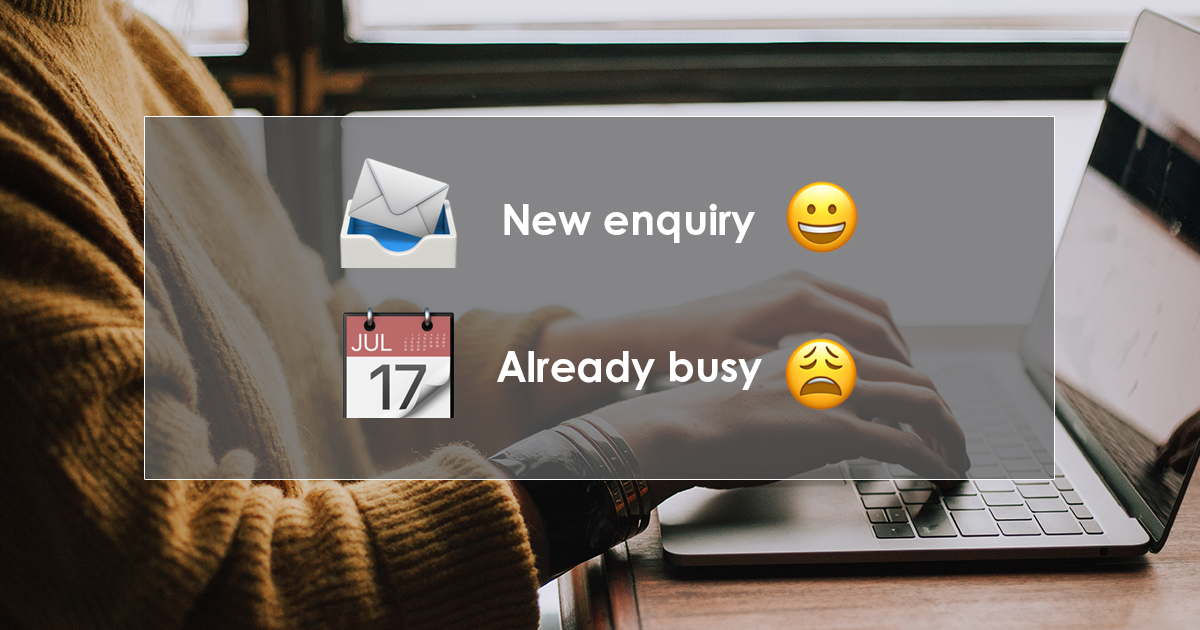
It’s near impossible to only market to clients on dates that you can fulfil, so how can you cut down on waste from enquiries that you’re unable to work with because of other commitments?
It’s important to take a step back and look at the bigger picture from time to time.
As you go about your day to day work, you’re consciously and unconsciously gathering all sorts of information that can help you to run a more effective business.
I had been running my photography and videography business for the best part of a decade and was fairly good at looking at things like where my enquiries were coming from, what my return on investment from those activities was, average customer spends and so on.
But there was one piece of information that I hadn’t reviewed which would have made a substantial impact on my marketing.
It was only in a quiet moment during the pandemic lockdown that my curiosity was piqued and I really wish I’d looked at this sooner!
Day to day I recorded all of my enquiries, including those that I couldn’t do, keeping track of where the enquiry came from, the date the client was enquiring about and why the client didn’t proceed with booking – e.g. they told me they’d booked someone else, they ghosted me or the lead went stale, or I was unavailable on their date.
This gave me useful insights into which marketing channels gave me the most enquiries, but also how well they converted and what the average client spend per marketing channel was.
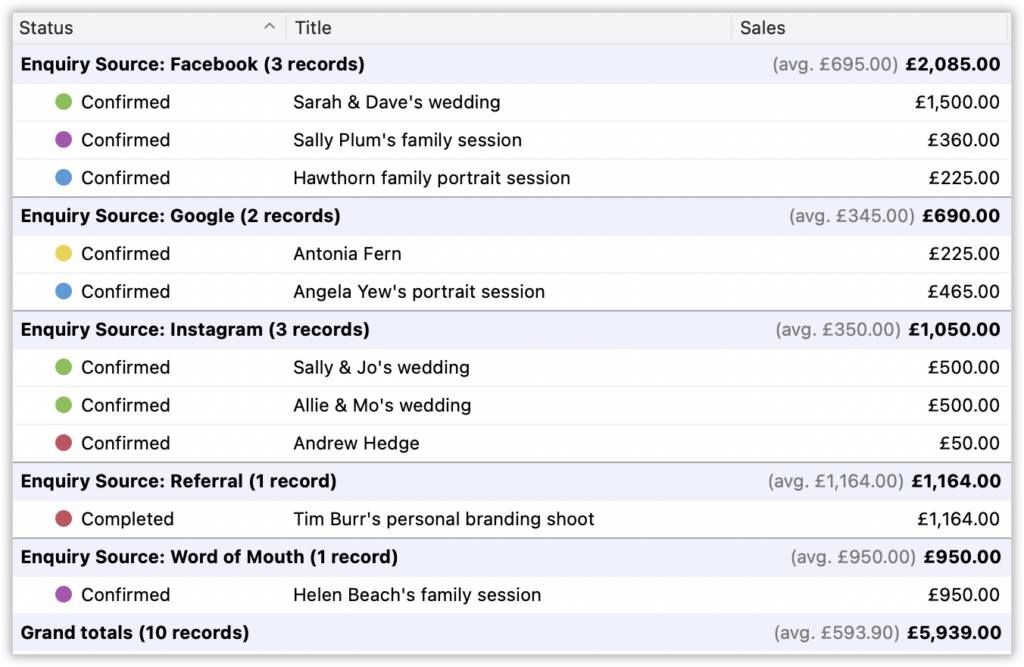
But something I hadn’t explored in any detail was the enquiries that I hadn’t booked because I wasn’t available.
I’d never given those much more attention than to respond with a standard email listing a few other photographers, wishing them well, noting why I wasn’t booking that enquiry and moving on – a few seconds of my time in total.
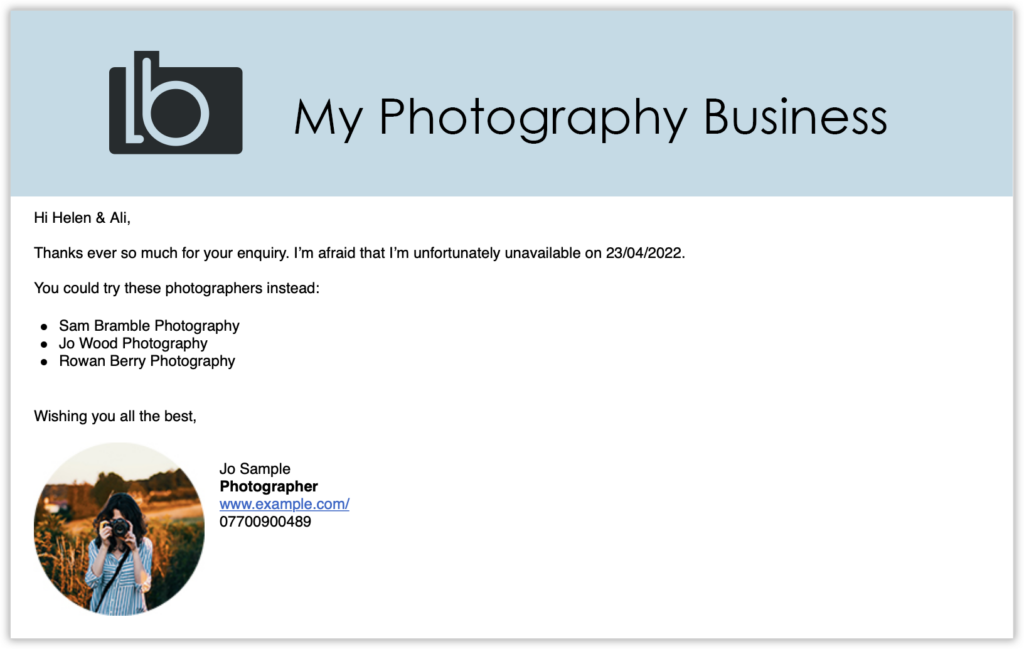
Why bother spending any more time? I’m not going to convert that client.
Well, when I looked at how many of those sorts of enquiries I had, I realised that they made up a substantial percentage of all of the enquiries I got through the year.
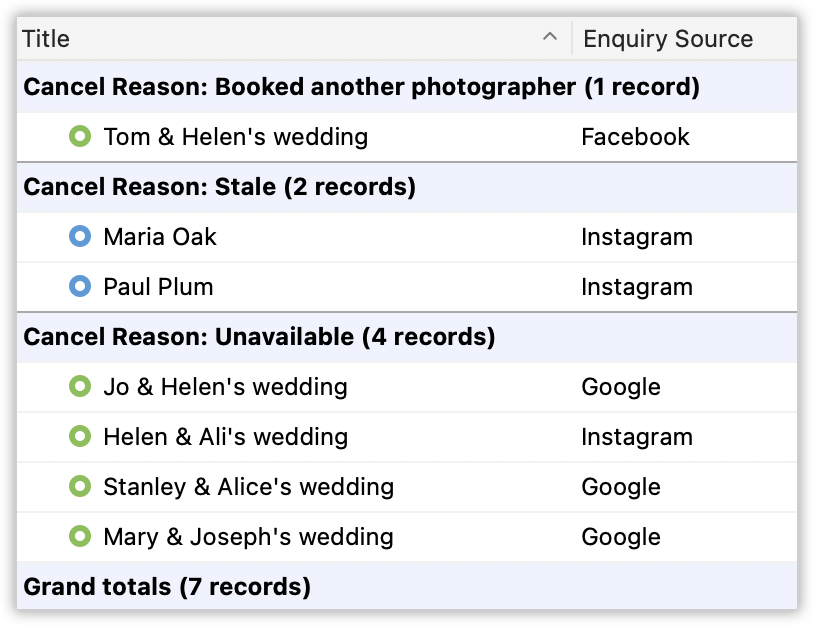
Everybody will market their business in different ways, using a blend of strategies that involve a combination of your time and money in order to generate enquiries. If a substantial percentage of those hard earned enquiries are falling at the first hurdle because you can’t take the booking, then a portion of your marketing efforts are being wasted too.
It’s near impossible to only market to clients on dates that you can fulfil, so how can you cut down on waste from enquiries that you’re unable to work with because of other commitments?
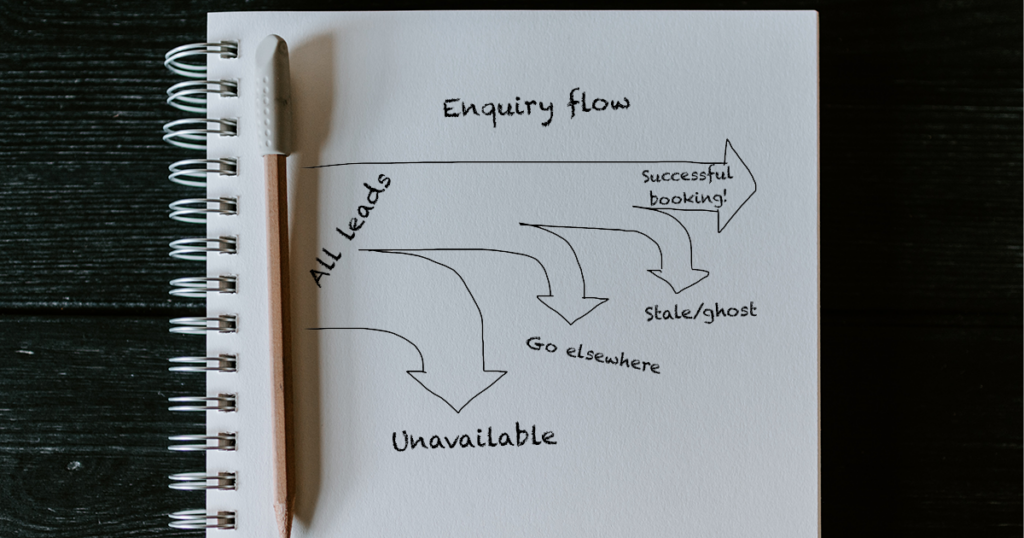
You, times two
One answer would be to engage an associate photographer. Any dates that you weren’t available for could be passed on to an associate, and since you’re keeping the booking in-house you would still be getting some return on your marketing efforts.
Check out this guide on working with associate photographers using Light Blue.

But when is the right time to hire an associate? You’d need to make sure that there’s enough enquiries coming in regularly to sustain that relationship.
That doesn’t happen overnight, so is there a half way point?
Building a close referral network
Earlier I mentioned that I handled enquiries that I couldn’t fulfil by blindly recommending the same handful of photographers – I didn’t check if they were available or not, I simply passed on a list and got on with my day.
But what I could (and should) have done was to build a referral network of a small number of photographers with a similar style and price point, and then referred each enquiry to just one of those photographers. If my network and I shared a calendar of our availabilities – not the fine detail of what we were up to, just an indication of who was free/busy on a given date – then I could confidently refer one of my network to the client and say that I knew they had availability.

That wouldn’t have needed to take a great deal more time than my old approach, a quick check of the shared diary and then selecting the right email template is all it would take.
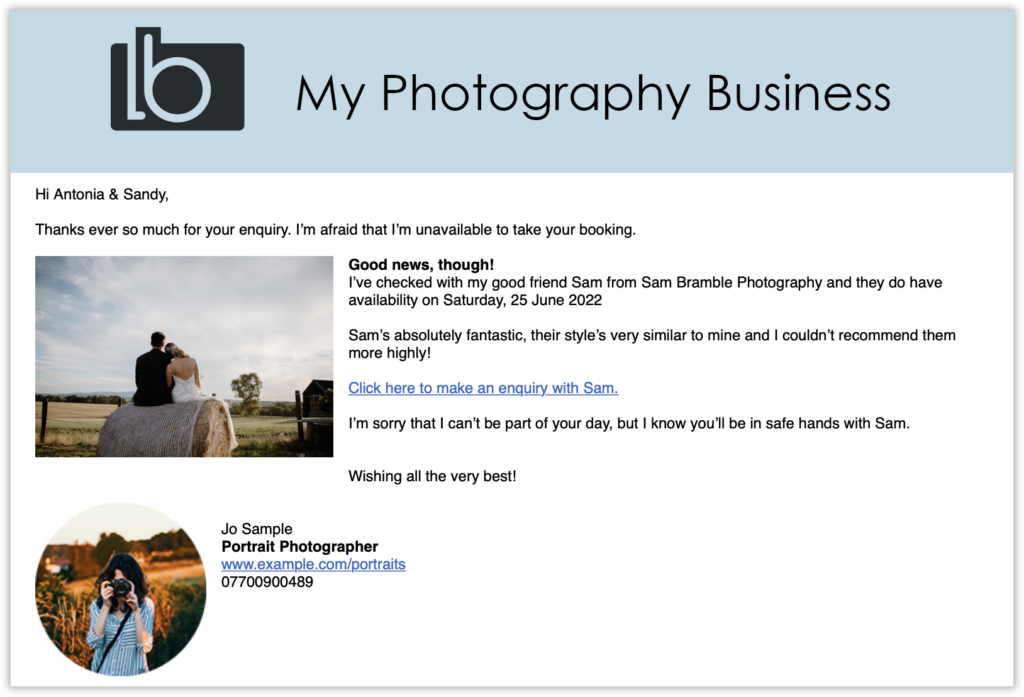
So why bother doing that? I’m still not booking that enquiry.
Referral networks are a reciprocal relationship and while I’m sending my unavailable enquiries to my network, some of my networks enquiries will be coming to me on dates that I can do.
I can record who I passed my unavailable enquiries on to and which members of my network have sent work back my way when I get those new referred enquiries, so I can ensure that my referral relationship is fair and balanced.
Essentially I’m recycling my unavailable enquiries and turning them in to new enquiries from my network.
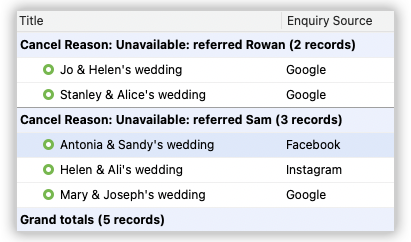
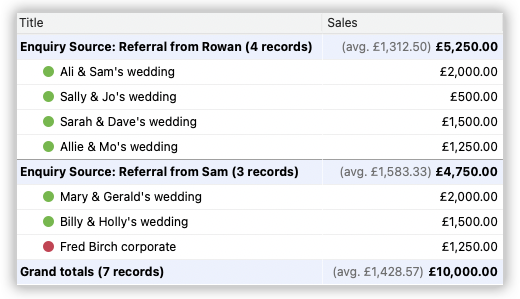
What about larger referral networks like Facebook groups, forums and organisations?
It’s less likely that you’ll have a direct exchange of referrals from those larger groups, so keeping track of who you passed work on to and who sent work your way would be much harder.
Instead it could be an idea to think of the whole referral group as one source.
That way you’re able to see the balance of how many jobs you’re bringing into the group and how many are coming back to you. If you’re part of several groups then this allows you to understand which groups are providing a fair relationship for you.
Having all your business information in the right place makes the job easy.
As I was going about the daily running of my business, my Light Blue database was quietly amassing a wealth of useful information. When I took the time to step back and see the bigger picture I had all of that information together already, so there was no need to fiddle with spreadsheets or take time collating and merging information.
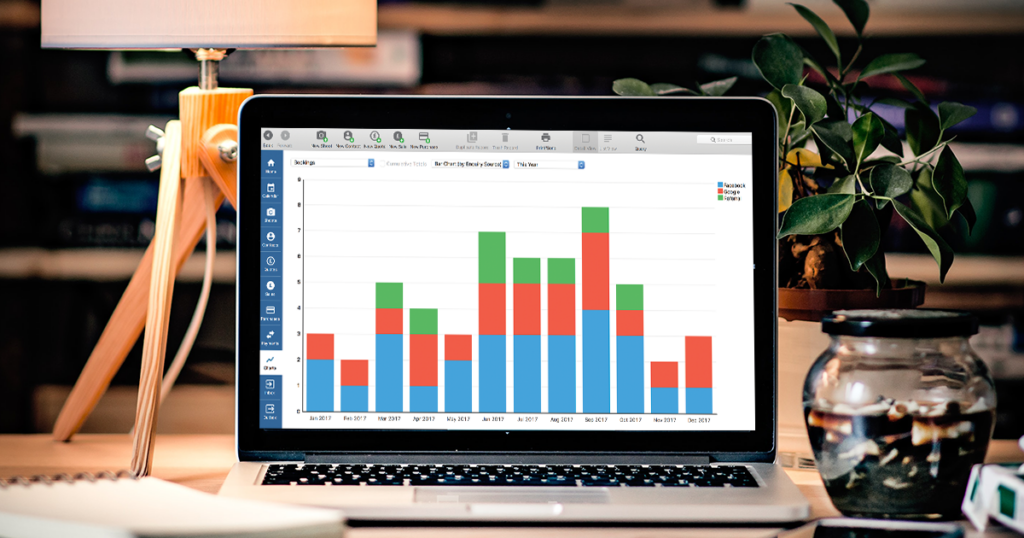
Light Blue’s powerful querying and reporting tools did all the hard work for me.
The important lesson is to make sure that you’re reviewing this information on a regular basis so that you’ve got the insights to make smarter decisions.
Related
- How to Manage Photography Client Expectations
- How To Attract Your Ideal Photography Clients
- Book more clients by phoning your leads - tips for making successful calls
- Using Sales Data to Drive Smart Upselling
- How to deal with difficult clients
- The Ultimate Guide to Selling Wedding Albums: Insights from Folio Albums and How Light Blue CRM Can Boost Your Sales
- How to Find a Consistent Photography Client Base
- How to Get More Word-of-Mouth Referrals
- How to Automate Time-Consuming Tasks
- The Photographers’ Guide to Finances and Budgeting